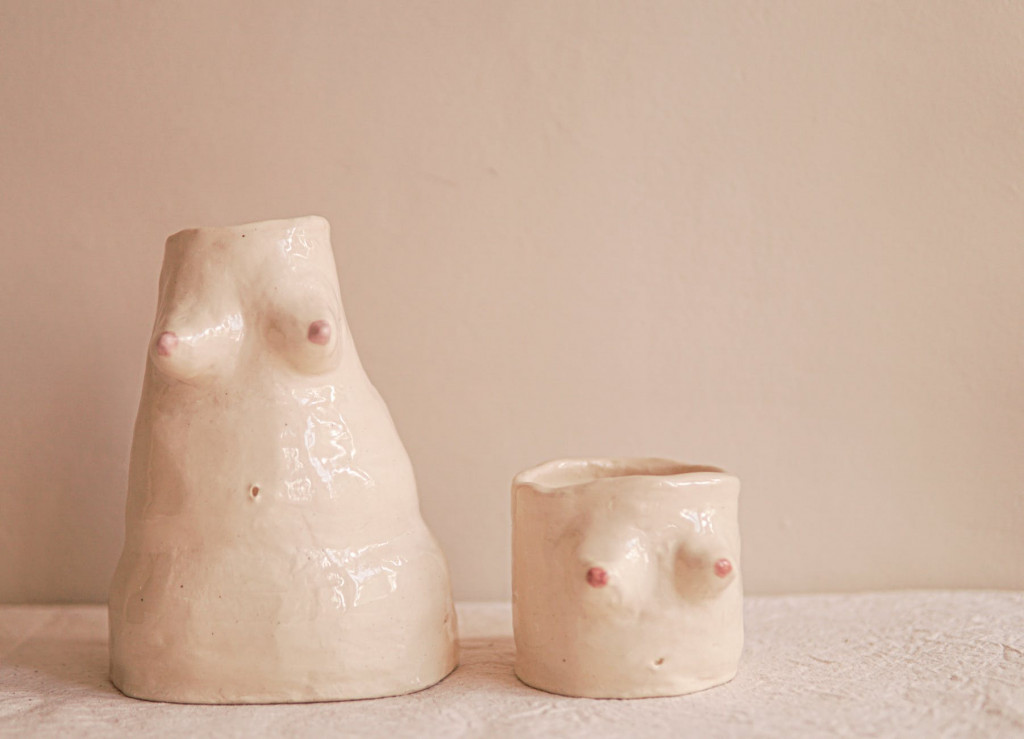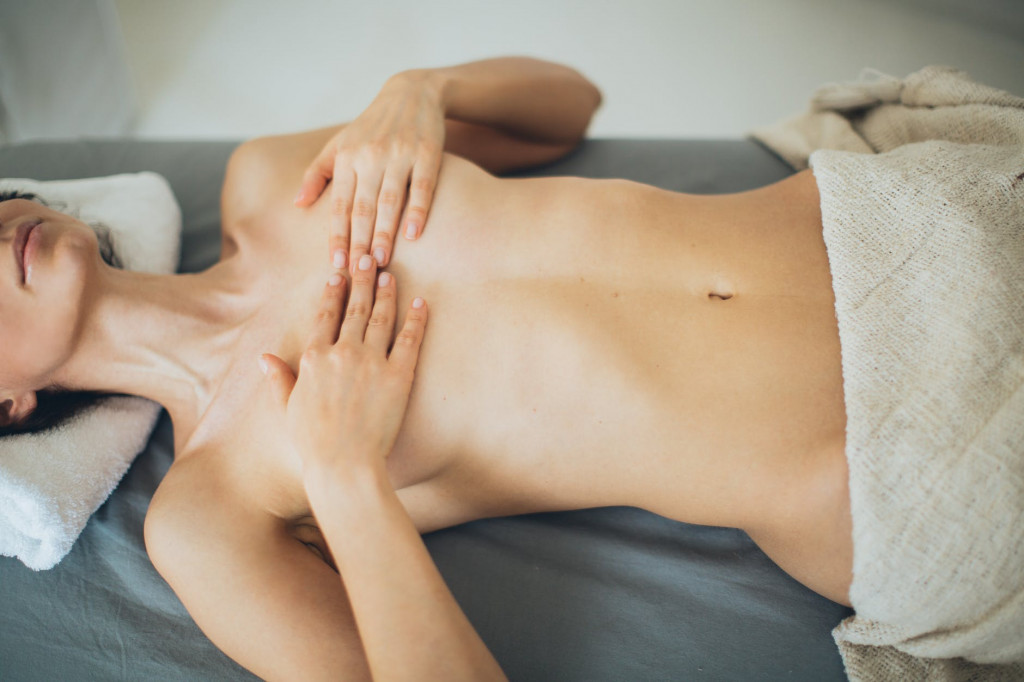Have you experienced breast pain before your period? It might be a week or two before your period, you get up out of bed and feel like your bust size increased over night and you are carrying the weight of two watermelons on your chest? For some people, this can be a reoccurring theme every month.
Cyclic breast tenderness or breast pain (also called cyclic mastalgia) is a pretty common premenstrual symptom. However, whilst this is normal, it is important to always be taking breast care and examination seriously.
So let’s take a look at what this is all about!
What is cyclic mastalgia?
Cyclic means it comes and goes in a predictable way; mastalgia is simply another way of saying breast pain. Cyclic breast pain can bring daily discomfort and unease. It is likely related to hormonal changes that occur during your menstrual cycle. It’s a feeling of soreness or dull ache that can occur during the luteal phase (after ovulation and before the period). It can be experienced as early as two weeks before your period, or just a few days before your period and tends to resolve as your period starts.
Symptoms:
If you notice the soreness in your breasts appearing and subsiding every month, then it is most probably cyclical breast pain. The following are the most common symptoms of cyclical breast pain:
- Soreness and a dull pain in the upper and outer area of both breasts
- A feeling of aching, tender, heavier or swollen breasts before a period
- Pain affects both breasts, and may often also spread to the armpits
- The pain can range from mild and dull to severe in some cases
- Usually begins around two weeks before menstruation and fades away at the start of your period
What causes the breast pain and tenderness?
The theories behind this type of pain appearing and disappearing cyclically include excess estrogen or prolactin, or deficient progesterone during the luteal phase. There are also studies that suggest that the cause may be due to fluid retention and lipid (fat) metabolism and even swollen milk ducts have also been found in people experiencing both cyclical and non-cyclical breast pain.
How to reduce breast pain before a period
While cyclical breast pain tends to subside on its own at the start of the period, there are a number of ways in which may help to reduce the occurrence and severity of breast soreness and pain. The following are some of the effective methods of doing so:
-
Reduce/eliminate caffeine intake:
Since studies have linked high consumption of caffeine with breast pain, try reducing your daily coffee intake, or switch to decaf for effective results. This also means reducing your intake of all drinks and foods with caffeine, such as soft drinks, energy drinks, tea, chocolates, etc.
-
Monitoring dietary fat intake:
According to research, reducing fat intake, and increasing fibre from vegetables and fruit has been shown to reduce breast tenderness. Adjusting your daily fat intake may have an effect oestrogen levels which has also been linked to breast pain. Remember that healthy fats are a very important component for normal body function, so should definitely not me eliminated.
-
Wear a firm, supportive bra:
Breast tissue is delicate. The right fitting bra that offers great support to minimise movement can help to manage any pain that may be associated with excess swaying of the breasts. If you like wearing a bra at night, this is a big ‘no no’ when it comes to breast soreness. It can interfere with blood circulation and lymphatic drainage, causing inflammation and swelling of the breasts.
-
Relaxation techniques:
Chronic stress could also play a factor in causing breast tenderness Therefore, gentle exercise, simple breathing exercises, massage, aromatherapy, and deep breathing have all been shown to reduce stress and anxiety.
-
Warm or cold compress:
Whichever one feels better and provides comfort along with gentle massage if appropriate can offer relief.
-
Addressing birth control methods:
The oral contraceptive is hormonal in nature and contains estrogen and progesterone. This has the potential to stimulate the swelling or soreness in the breast tissue. It can be helpful to discuss with your health care provider the various options available to manage your fertility
-
Vitex agnus-castus:
Research shows that the herb Vitex agnus-castus, (also known as chasteberry), may help to improve a variety of premenstrual symptoms, including breast swelling and pain. Our naturopath can explore the natural herbal options available to assist you.
Closing
While breast pain and soreness before a period is usually due to the body’s natural hormonal fluctuations and subsides once the period begins, it could still cause considerable discomfort. It is important to note that if your breast pain persists for months and/or does not seem to be of cyclical nature, and feels more like a tight, burning or sharp pain, instead of the dull ache, it is strongly advised to consult a health care provider.
Resources
Smith RL, Pruthi S, Fitzpatrick LA. Evaluation and management of breast pain. Mayo Clin Proc. 2004 Mar;79(3):353-72.
Peters F, Diemer P, Mecks O, Behnken LJ. Severity of mastalgia in relation to milk duct dilatation. Obstet Gynecol. 2003 Jan;101(1):54-60.
Mirghafourvand M, Mohammad-Alizadeh-Charandabi S, Ahmadpour P, Javadzadeh Y. Effects of Vitex agnus and flaxseed on cyclic mastalgia: a randomized controlled trial. Complement Ther Med. 2016 Feb;24:90-5
Schellenberg R, Zimmermann C, Drewe J, Hoexter G, Zahner C. Dose-dependent efficacy of the Vitex agnus castus extract Ze 440 in patients suffering from premenstrual syndrome. Phytomedicine. 2012 Nov 15;19(14):1325-31.
Schellenberg R. Treatment for the premenstrual syndrome with agnus castus fruit extract: prospective, randomised, placebo controlled study. BMJ. 2001 Jan 20;322(7279):134-7.


